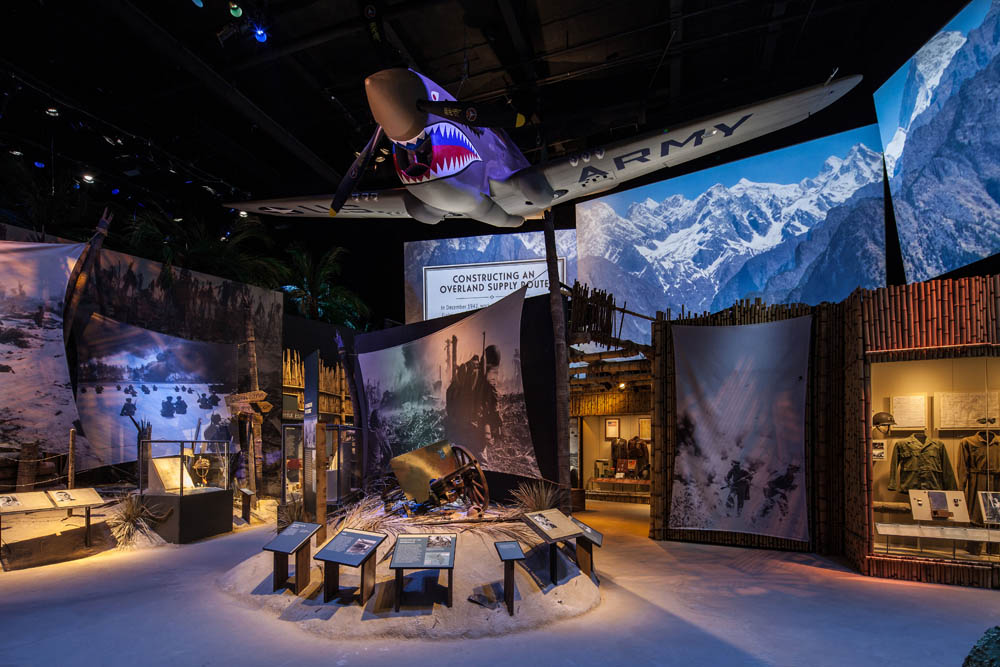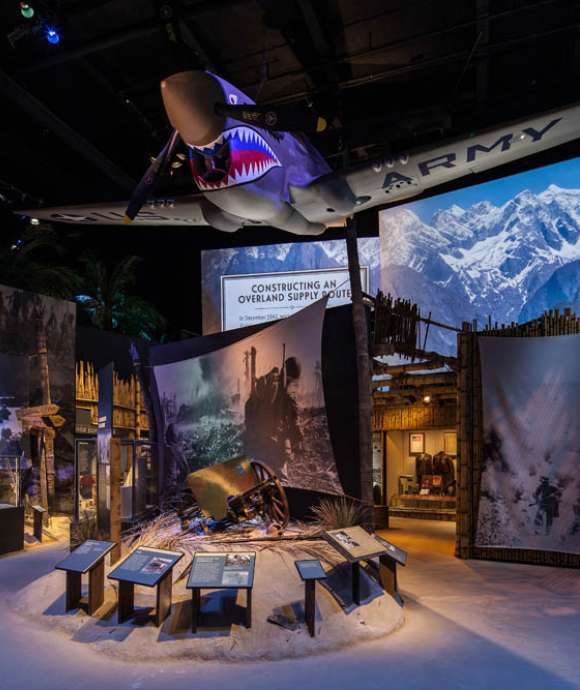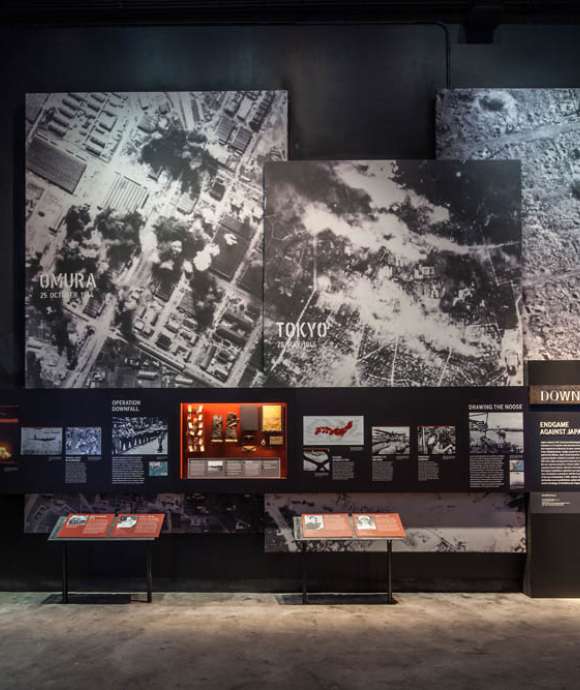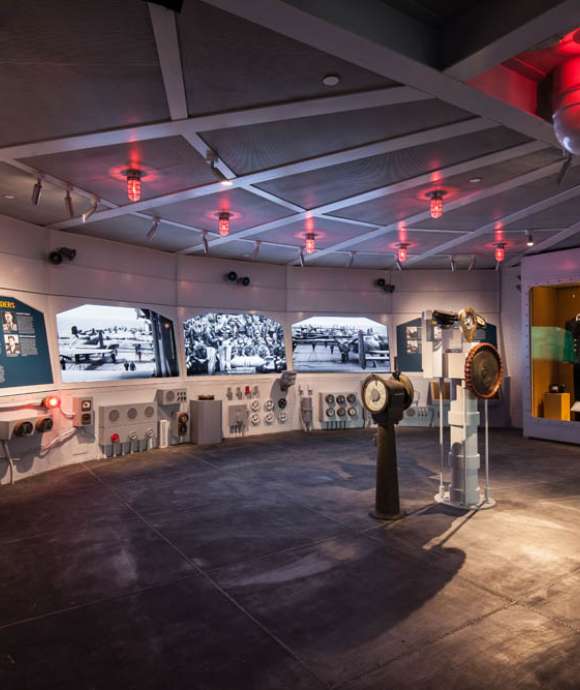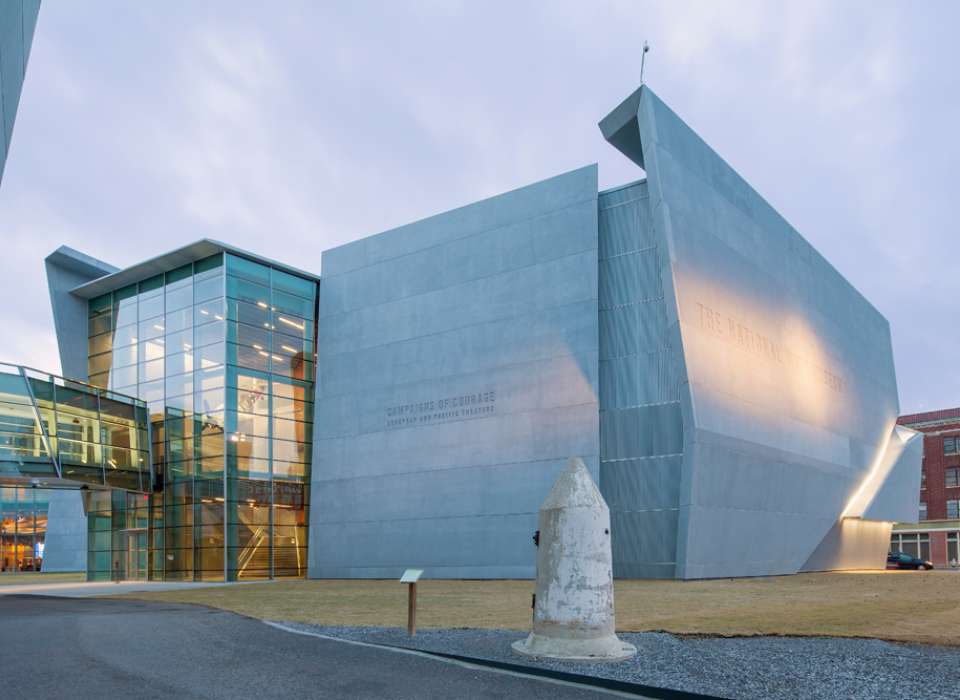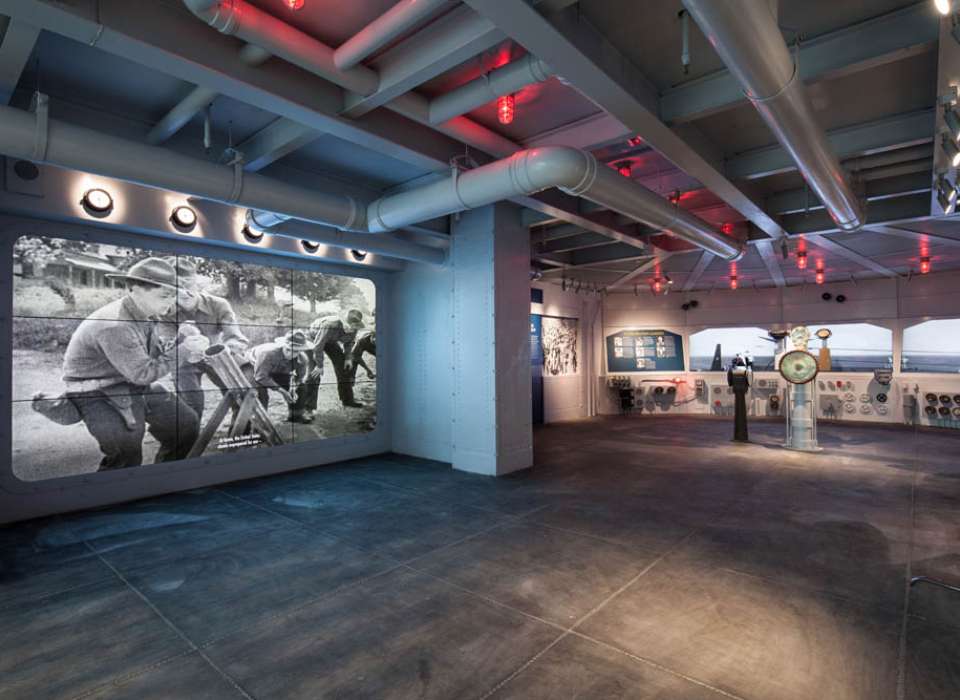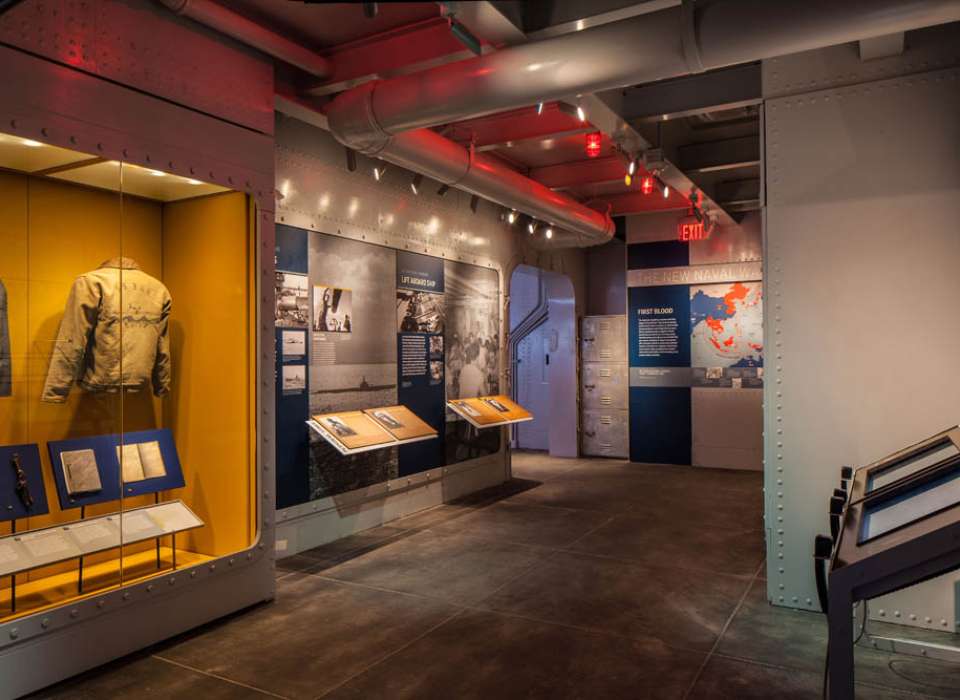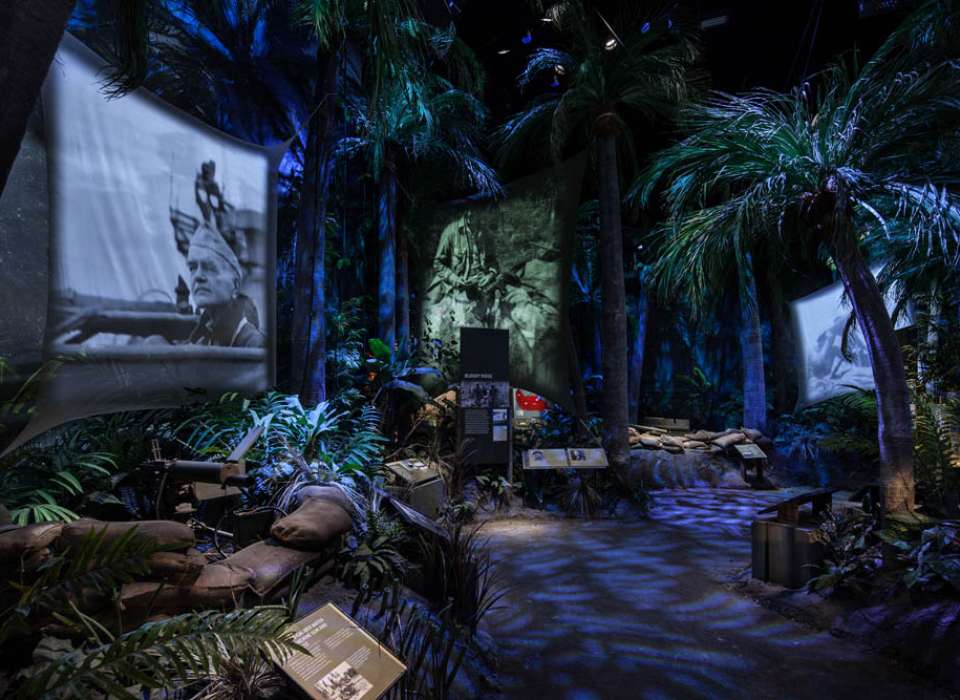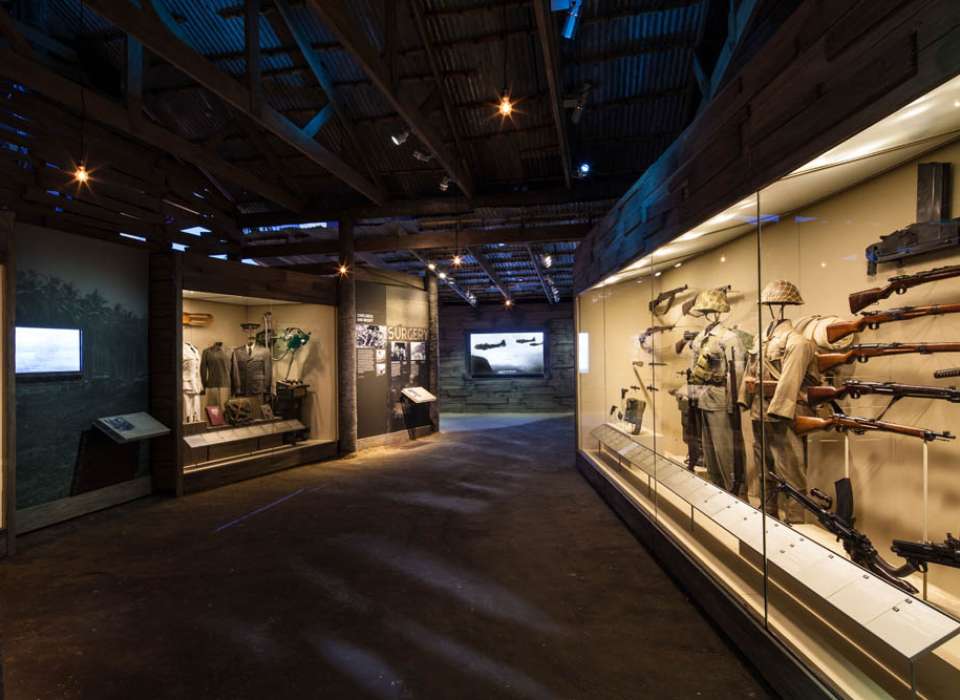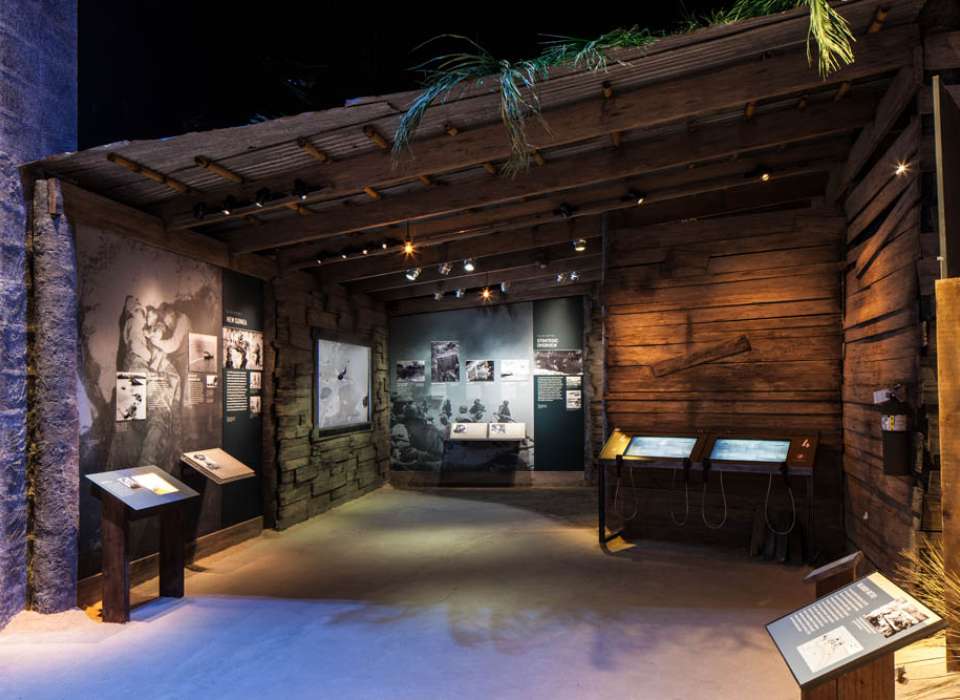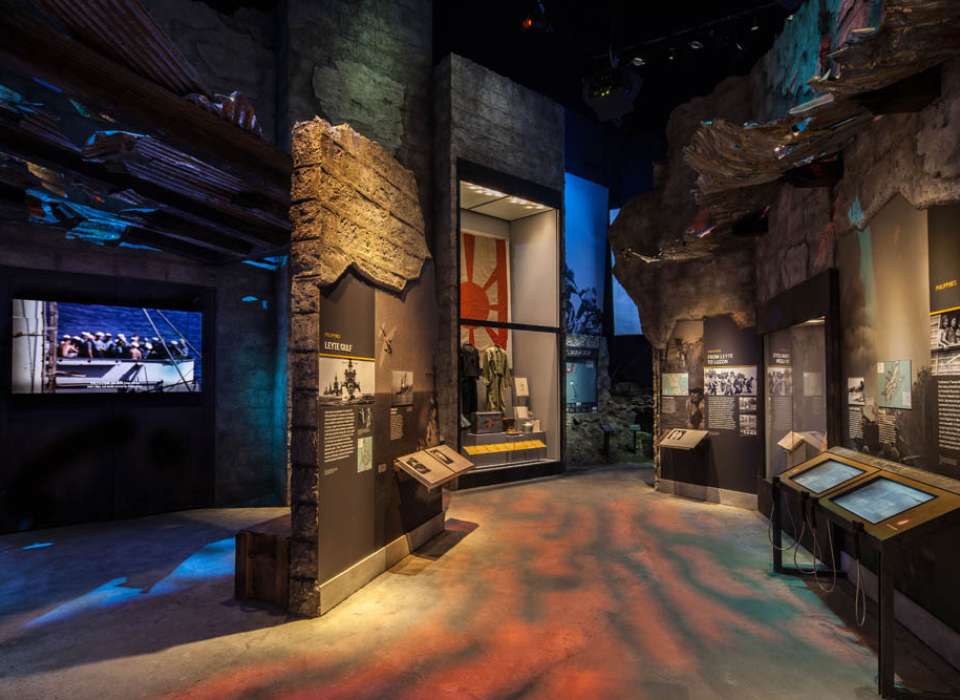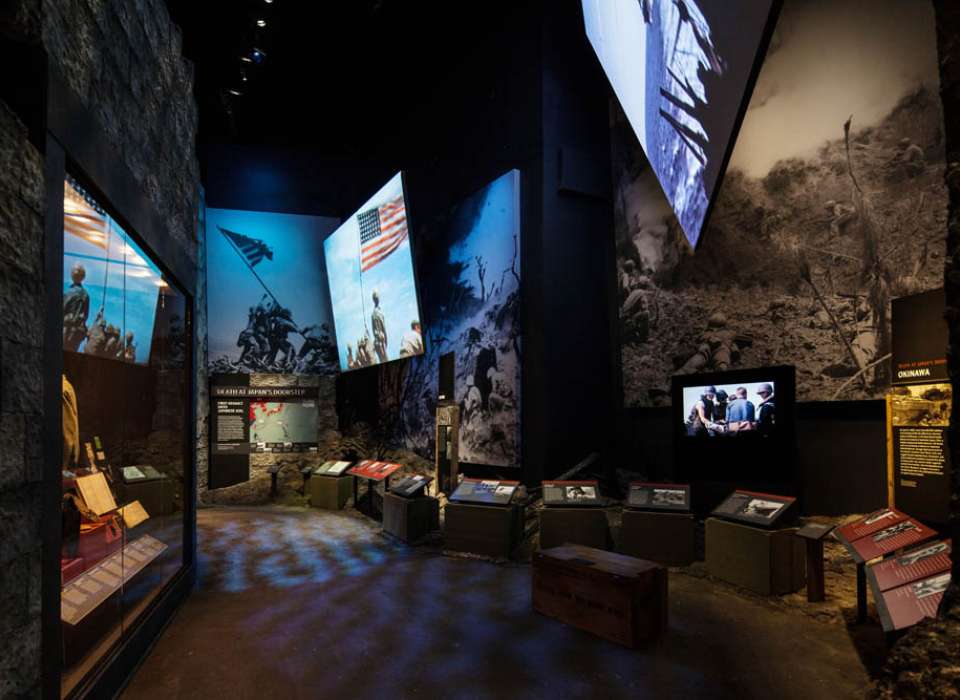Richard C. Adkerson & Freeport-McMoRan Foundation Road to Tokyo: Pacific Theater Galleries opens on the second floor of the Museum’s Campaigns of Courage pavilion on December 12, 2015. Ten galleries retrace the grueling trail that led from Pearl Harbor to Tokyo Bay by way of New Guinea and Southeast Asia, the Himalayas, Burma, the islands of the Pacific, China, India, and Alaska. Exhibits explore the evolving strategy for fighting relentless Japanese forces in Asia and the Pacific, examining cultural differences, logistical challenges, and the staggering range of extreme conditions that confronted American military forces in Asia and the Pacific.
Conveyed through artifacts, oral histories, serialized “Dog Tag” profiles, short films, and recreated environments, Road to Tokyo shares the narrative of a world that was unimaginably alien to American GIs, a conflict of searing brutality, and a victory so devastating it is hotly debated even today. This is the story of the Americans who forged a road to Tokyo through courage, ingenuity, and great sacrifice, and ended the war at last.
MEDIA RESOURCES
-
 Learn More
Learn MorePress Release
-
 Learn More
Learn MoreFact Sheet
-
 Learn More
Learn MoreExhibit Information
HIGH RESOLUTION IMAGES
Click on an image below to download a high resolution file. Don’t see the image you are looking for? Contact us with your specific request. Please specify your publication and deadline.
Please credit all images "Courtesy of The National WWII Museum."
Campaigns Exterior
Campaigns of Courage: European and Pacific Theaters, the newest pavilion on the campus of The National WWII Museum in New Orleans, opened December 13, 2014, with the dedication of its first-floor exhibition: Road to Berlin: European Theater Galleries. Road to Tokyo: Pacific Theater Gallerieswill open on the second floor in December 2015.
The Road to Tokyo: Facing the Rising Sun
On the heels of the Japanese attack on Pearl Harbor, Germany and Italy have declared war on the United States. America is headed to war. Facing the Rising Sun takes visitors into this daunting moment in history, introducing the key leaders whose loyalties and ambitions define the moment, and the logistical challenges of a two-front war that will shape the years to come.
Briefing Room: Japanese Onslaught
A recreated bridge of the USS Enterprise places visitors at the center of US strategy, aboard the carrier fleet that would be so critical to the success or failure of Allied efforts in the Pacific. Here, visitors take in an overview of US strategy and meet military leaders from both sides, while newsreels report Japanese victories and brutal treatment of American POWs. The Enterprise is steaming into hostile waters, and the odds for its survival—and the survival of the sailors, pilots, and mechanics on board—look grim indeed.
The New Naval Warfare: First Blood
In this two-part gallery, a ship's interior presents the quieter side of life aboard ship; "outside" on the ship's deck, story panels introduce key naval actions, and the Midway theater dives deeper into the Pacific’s most pivotal battle. Actual footage of planes in action on the Enterprise flight deck completes the illusion of being onboard ship as visitors take in themes of the new naval warfare, including submarine fatalities, code-breaking work, and the dramatic speed with which the tides of war can shift.
Guadalcanal: Green Hell
The setting shifts from sea to land at Guadalcanal, the site of World War II’s first major amphibious landing and the first ground assault by US forces. Vividly rendered and viscerally impactful, this experiential gallery features an immersive environmental narrative that draws the visitor into a towering palm jungle, following in the footsteps of American servicemembers as they battled heat, mosquitoes, disease, dense vegetation, and unfamiliar terrain along with a ferocious enemy in an all-consuming, round-the-clock battle.
Pacific Theater Challenges: Fighting in the Tropics
In addition to a merciless enemy, US troops in the Pacific Theater were faced with non-existent infrastructure and rampant disease. Under assault to body and mind, Americans needed superior engineering and ingenuity just to survive. This gallery tells the story of those who answered that call: Seabees who built roads and airfields; nurses and medics who treated new diseases with new vaccines; and chaplains who helped lift spirits wearied by the relentlessly brutal nature of the Pacific war.
Island Hopping: Footholds across the Pacific
The “island hopping” strategy targeted key islands to capture and equip with airstrips, bringing B-29 bombers gradually within range of the enemy homeland. In this serpentine gallery, a realistic beachscape recreates a landing site on the island of Tarawa. Other exhibits describe the integrated effort between sea, land, and air, as well as successes in intelligence (Native American code talkers), technology (the long-range B-29 Bomber), and carrier warfare (the Marianas Turkey Shoot) in the fight for control of the skies.
China-Burma-India: The Pacific War's Second Front
"CBI" held critical strategic importance for US forces: While 11 Japanese army divisions battled US forces on the islands and at sea, a staggering 40 more were tied up in the Sino-Japanese War in China—and the Allies were determined to keep them there. Doing so meant supplying the Chinese with essential materiel, overcoming a maze of logistical challenges. A contoured topographical map helps illustrate the geographical obstacles American troops faced as they defended supply lines, rescued downed pilots, and engaged in covert operations in support of this critical ally.
Philippines: Returning to the Philippines
As an American Commonwealth, the Philippines held special meaning for US forces: this was American territory in enemy hands—and a people to whom the United States had promised independence. Its liberation, which MacArthur saw as a moral imperative, was a strategic necessity: the Philippines were perfectly positioned to control shipments oil and other supplies. The fight would be costly and vast. Manila, a city once known as “the pearl of the Orient,” was decimated by the conflict, resulting in the urban ruins depicted in this immersive gallery.
Death at Japan's Doorstep: First Assault onto Japanese Soil
Desperate fighting underscored the implacable fervor of the enemy—Japanese soldiers willing to resist to the last man. The enemy also had a logistical advantage: an underground defensive network of caves and tunnels, realistically depicted in this environmental gallery. Exhibits discuss the lifesaving impact of Navajo code talkers; the headline-grabbing losses of General Simon B. Buckner, journalist Ernie Pyle, and nearly 20,000 others; and the extraordinary valor that earned US Marines a total of 27 Medals of Honor in Iwo Jima—more than in any other battle in World War II.
Downfall: Endgame Against Japan
This haunting gallery surrounds the visitor with scenes from the aftermath of the atomic bombs, presented on oversize screens and accompanied by a musical soundtrack that is both somber and contemplative—an invitation to reflect on a moment that has spurred debate ever since, and a moment when Japan at last saw the hopelessness of its cause. Visitors pass through to a final room in the gallery to witness the surrender ceremony aboard the USS Missouri, which marked, at last, an end to the war that changed the world.
